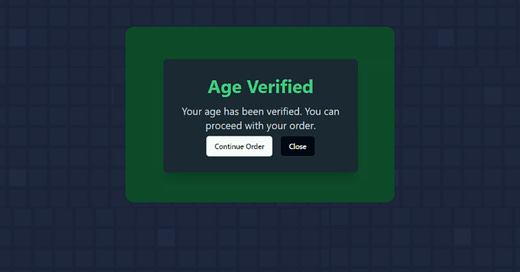Text-to-Code-to-Git is now possible with GPT-Engineer and we took full advantage of it.
1 Hour of Team Ideation, plus 8 hours of conversation with the tool and voila, a functional demo was ready.
This is exactly how we built our first AI app, Age Check Spotter, an age verification service using facial recognition to verify the real age of a potential customer before purchase.
If you want to learn more about our concept, the challenge it faces, a video demo and how to incorporate it into your processes, check it out here.
GPT Engineer not only developed the foundation of our app but also allowed us to create the repository with a click of a button!
A single prompt sparked the conversation and the first version was ready:
Create a micro-service for e-commerce businesses that checks customers' IDs and validates with face detection for 18+ products. This App checks the ID and face of the customer before completing the order to ensure that the user is 18+.
While the initial output was functional, we refined it further to create a simple and minimal design and outline our face recognition service.
The Libraries of AgeCheck Spotter
We created the core service using Python, leveraging several powerful libraries:
Flask: A lightweight Python web framework for our backend
OpenCV: For image processing tasks
face_recognition: To handle facial detection and comparison
PIL (Python Imaging Library): For additional image processing capabilities
Our service exposes a REST API endpoint ('/verify') that processes POST requests containing base64-encoded images and birth date data. Here's how it works:
It employs facial encoding comparisons using
face_recognition.face_distance()to validate identityCalculates age based on the provided birth date
Determines if the user meets the age threshold (18+)
Handles image processing with PIL and io modules
Converts datetime objects for accurate age calculation
Returns a JSON response with:
Boolean face match results
Calculated age
Over-18 status
Similarity percentage between facial encodings
Overcoming Challenges
During development, we faced a few challenges:
Frontend-Backend Integration: We used Cursor, an AI-infused code editor, to help us implement CORS (Cross-Origin Resource Sharing) in our Flask app. This resolved communication issues between our front-end and back-end.
Adding Dark Mode: Again, Cursor, helped us implement a dark mode toggle with just a few prompts.
Want to learn more about the project? Check the GitHub Repo here
The Future of Coding
Even before building this app, we knew the potential of taking an AI-first approach. AI brings speed to the process, but the real value now lies in high-level planning, design, and problem-solving.
As we head into an AI-driven future, the role of software engineers is evolving. It’s less about writing code and more about creativity, strategy, and deeply understanding systems. We’re ready for this shift and ready to help others adapt too.
Let’s Keep the Conversation Going
I’d love to hear from you—whether it’s feedback on how we approached this, suggestions on what we could improve, or ideas for future projects. Join the conversation and share your thoughts.
Let’s Connect!
💼 LinkedIn: alex-kazos
👨🏻💻 GitHub: alex-kazos





